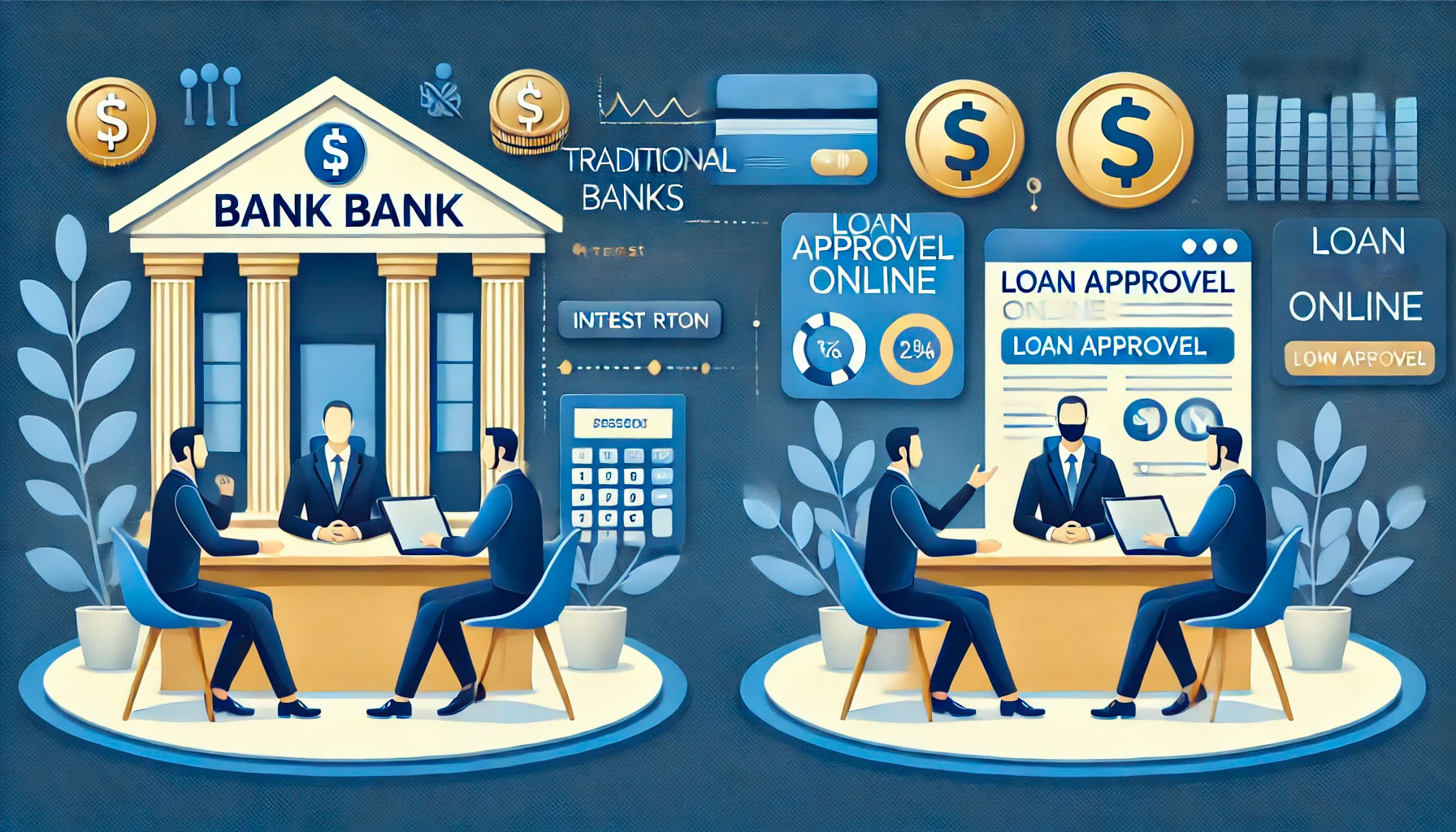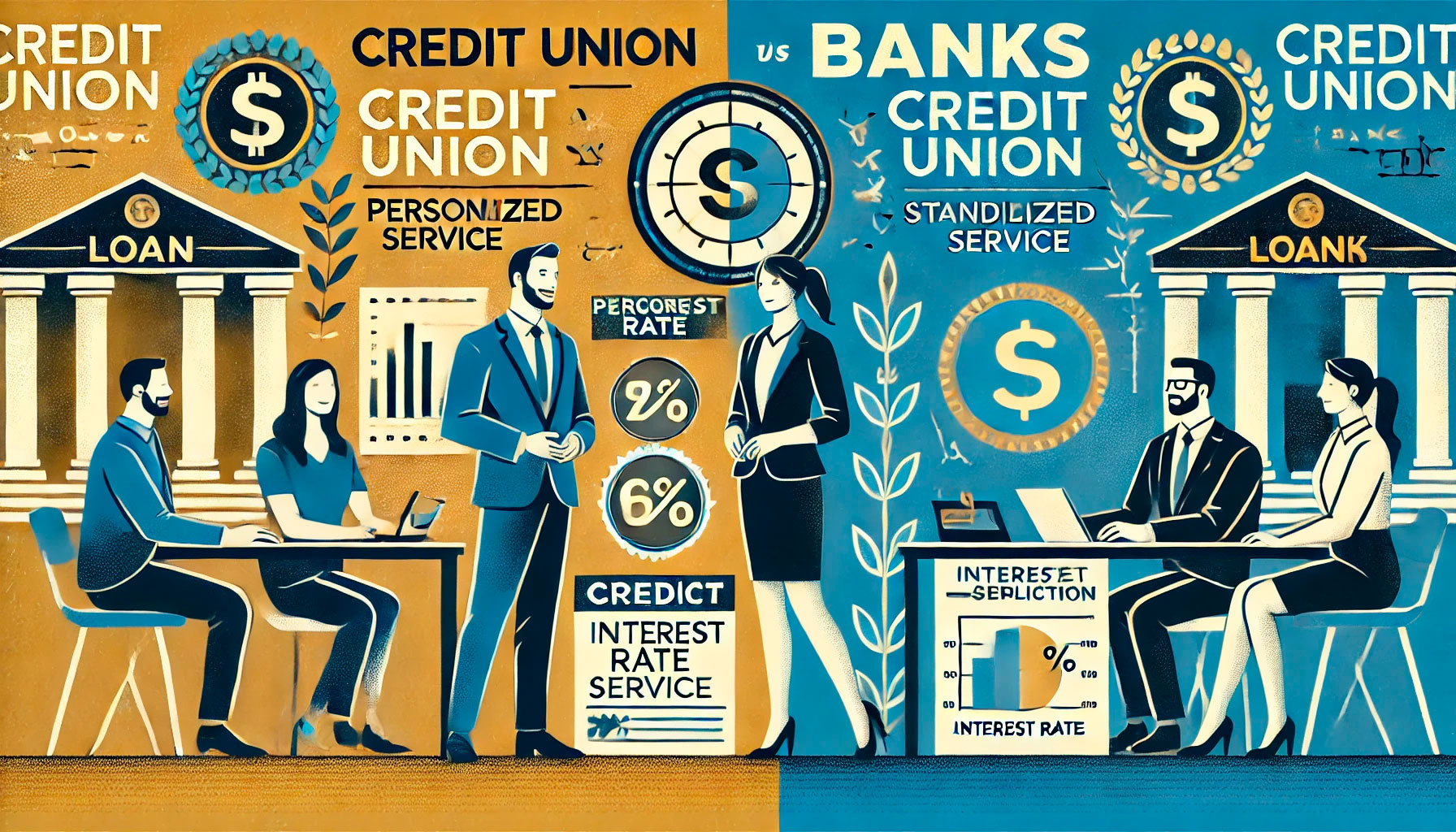Consumer lending has become a central aspect of the modern financial system, providing individuals with the ability to borrow money for various purposes, such as purchasing a home, buying a car, or consolidating debt. As the financial industry continues to evolve, both traditional and online banks have become major players in the consumer lending space. While both types of banks offer loans, they differ in several important ways, including the application process, interest rates, fees, and customer service. In this article, we will explore the key differences between traditional and online banks in consumer lending and how these differences affect borrowers.
Physical Presence vs. Digital Access
One of the most obvious differences between traditional and online banks is their physical presence. Traditional banks have brick-and-mortar locations where customers can visit to apply for loans, meet with loan officers, and discuss loan terms in person. These banks often provide a more personalized experience, as borrowers can speak directly with bank representatives, ask questions, and receive assistance throughout the loan application process.
In contrast, online banks operate entirely through digital platforms. Borrowers apply for loans, manage their accounts, and communicate with customer service entirely online, without the need for in-person visits. Online banks often have more streamlined, automated processes that allow for quicker loan approvals and disbursements. While this can make borrowing more convenient for tech-savvy consumers, it may not appeal to those who prefer face-to-face interactions or need additional guidance during the loan process.
Loan Application Process
The loan application process at traditional banks often involves a series of steps, including submitting physical paperwork, meeting with loan officers, and waiting for approval. While the process can be more personalized, it may also be more time-consuming. Borrowers may need to take time off work or visit a physical branch multiple times to complete the application process. Additionally, traditional banks may require extensive documentation, such as income verification, tax returns, and credit reports, before making a loan decision.
Online banks, on the other hand, typically offer a faster and more streamlined application process. Borrowers can apply for loans entirely online by filling out digital forms and submitting electronic copies of required documents. Many online banks use automated systems and algorithms to assess loan applications quickly, which can result in faster approval times and quicker access to funds. Since online banks rely on digital data, the application process is often simpler and more efficient, allowing borrowers to receive loan offers in a fraction of the time compared to traditional banks.
Interest Rates and Fees
Interest rates and fees are another area where traditional and online banks differ. Traditional banks may offer competitive rates for certain types of loans, especially to customers with strong relationships with the bank. For example, customers who have a checking or savings account with the bank may receive more favorable terms or reduced fees for loans. However, traditional banks may also charge higher fees for loan origination, application processing, and other services. Additionally, the interest rates offered by traditional banks may be higher compared to online banks, especially for customers with less-than-perfect credit scores.
Online banks, in contrast, tend to have lower overhead costs because they do not operate physical branches. As a result, they can pass on those savings to borrowers in the form of lower interest rates and fewer fees. Online lenders often have fewer or more transparent fees, and they may offer more flexible loan terms, such as longer repayment periods or smaller monthly payments. However, while online banks generally offer lower rates and fees, borrowers with poor credit may still face higher interest rates due to the automated nature of the approval process, which may not always be as flexible as traditional banks in evaluating creditworthiness.

Customer Service and Support
Customer service is an important consideration when applying for a loan, as borrowers may need assistance throughout the loan application process or while managing their loan repayments. Traditional banks often provide more personalized customer service, with dedicated loan officers available to answer questions, explain terms, and offer assistance in person or over the phone. This level of personalized service can be especially beneficial for borrowers who are unfamiliar with the loan process or have complex financial situations that require additional support.
Online banks, however, typically offer customer service through digital channels, such as email, live chat, or phone support. While online banks may provide quick responses and 24/7 customer support, they do not offer face-to-face interactions. Some borrowers may prefer the human touch that traditional banks provide, particularly when dealing with important financial matters. However, online banks often make up for this with easy-to-use websites and apps, allowing borrowers to manage their accounts and track their loan progress independently.
Loan Offerings and Flexibility
Traditional banks typically offer a wide range of loan products, including mortgages, auto loans, personal loans, and home equity lines of credit (HELOCs). These banks often provide tailored loan products to meet the specific needs of their customers, and they may offer more flexibility when it comes to customizing loan terms based on individual circumstances. Traditional banks may also have more options for borrowers with complex financial situations, such as self-employed individuals or those with irregular income streams.
Online banks, while they may offer a narrower range of loan products, often provide more flexibility in terms of the application process and loan terms. Many online lenders specialize in personal loans or debt consolidation loans, with a focus on making the borrowing process simple, fast, and accessible. However, online banks may have stricter eligibility requirements or higher interest rates for borrowers with less-than-perfect credit. Despite this, online banks may be more willing to approve loans for borrowers with non-traditional credit histories, relying on alternative data and automated systems to assess creditworthiness.
Security and Privacy
Both traditional and online banks take measures to protect borrowers’ personal and financial data, but the nature of online banking introduces additional security concerns. Traditional banks typically have robust security systems in place to protect customer information, but borrowers may still need to visit physical branches for some transactions, which can limit exposure to online risks. Additionally, traditional banks are generally subject to more stringent regulatory oversight, providing an added layer of protection for consumers.
Online banks, while often offering strong encryption and security protocols, do rely on digital platforms for all transactions. Borrowers who are concerned about the security of their personal data may need to consider whether they are comfortable sharing sensitive financial information online. However, online banks generally invest heavily in cybersecurity measures to prevent fraud and protect their customers’ data, and they are regulated by the same financial authorities as traditional banks.
While traditional and online banks both offer consumer loans, they differ in several key areas, including the application process, interest rates, fees, customer service, and loan flexibility. Traditional banks provide a more personalized experience with in-person interactions and a broad range of loan products, but they may involve longer application processes and higher fees. Online banks, on the other hand, offer a faster, more streamlined loan application process with lower overhead costs, resulting in lower rates and fewer fees. However, online banks may not offer the same level of personalized service or the wide variety of loan products that traditional banks provide. Ultimately, the choice between a traditional bank and an online bank depends on the borrower’s preferences, financial situation, and the type of loan they are seeking.




